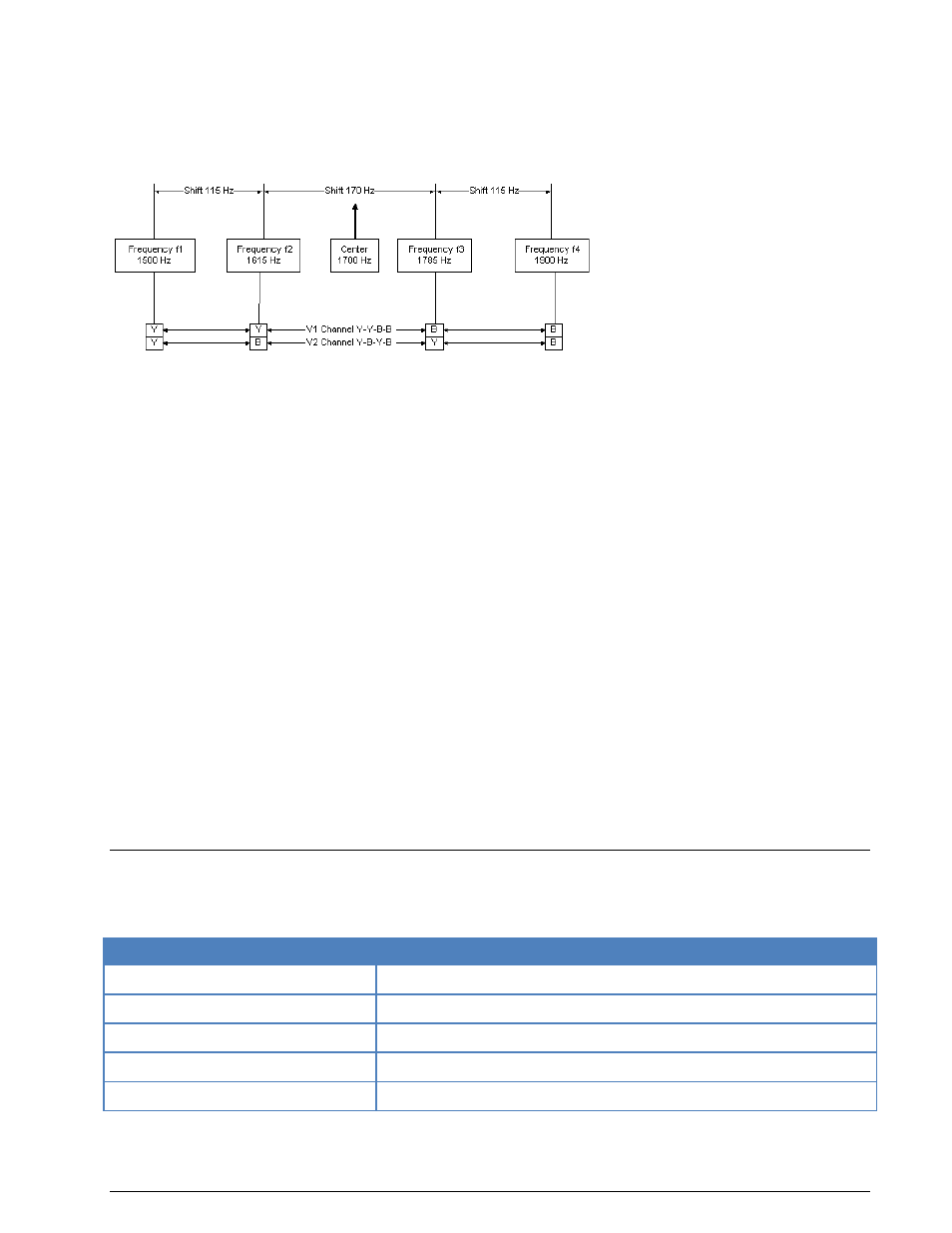Vdew – Wavecom W-SPECTRA (Automatic Monitoring System) V1.1.0 User Manual
Page 201

WAVECOM Monitoring System W-SPECTRA, W-SPEED Manual V1.1.0
Transmission Modes
191
via the Y-B V1 Channel item in the Options menu. In the Y-B V2 Channel menu one of four combinations is
selectable.
Most Twinplex stations work with the V1 combination of Y-Y-B-B and Y-B-Y-B (or B-Y-B-Y) in the V2 chan-
nel. Transmissions with a B-Y-B-Y combination in V1 and Y-B-B-Y in V2 are however also possible.
TWINPLEX (F7B) Principle of Operation
Measurement and Determination of TWINPLEX Frequency Shifts
Proper tuning is done using the FSK Analysis. The frequency shifts may be measured using the cursors.
The effective center frequency is the mid-frequency between the two inner tones f2 and f3. This is also
valid in case of asymmetrical shifts, e.g., 115-170-515 Hz.
After the measurements and the determination of the V1 and V2 frequencies, the values found must be
set up via the Shift item in the Options menu.
If no standard combination is used, the shift dialog box will allow the entry of any combination.
After the previously described set-up has been completed, the TWINPLEX mode can now be started by se-
lecting 100.0 Bd or a variable baud rate.
The preferred demodulator type is the MFSK mode: Otherwise the DSP mode may be enabled in the De-
modulator menu using the Mode item.
The proper assignment of the V1 and V2 keying combinations must now be set-up using the Y-B V1 Chan-
nel and Y-B V2 Channel items in the Options menu.
Most stations use the Y-Y-B-B setting for the V1 channel. The second channel frequently uses either the Y-
B-Y-B or B-Y-B-Y combination.
If synchronization is not achieved after configuration has been completed, change the V1 and V2 settings
until the right combination has been found. For example, transmissions are possible with V1 set to B-Y-B-
Y and V2 set to Y-B-B-Y. This combination results in the first three telegraph characters to be transmitted
on the V2 channel.
TWINPLEX stations only key the two inner frequencies f2 and f3 during the IDLE state (no traffic) or dur-
ing the RQ state (incorrect acknowledgement from the remote station). In these states SITOR and
TWINPLEX systems cannot be distinguished from each other.
VDEW
The entire call number is transmitted by consecutive tones in decade sequence. When two identical digits
are to be transmitted consecutively, then an eleventh frequency is used as a repetition identifier.
Parameter
Value
Frequency range
VHF/UHF
Operation modes
Analogue Selcal
Modulation
FM, SUB tone
Receiver settings
FM, BW = 12 kHz
Input format(s)
AF, IF
If more than two identical digits are to be transmitted, the repetition tone is appended to the digit tone
(e.g., 22222 is transmitted as f2 fw f2 fw f2, where f2 is the tone for "2" and fw is the repetition tone).
